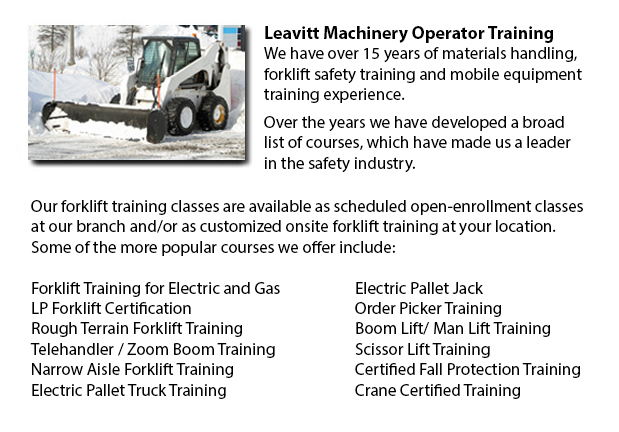
Ontario Skid Steer Ticket - The lift arms on the skid-steer loader are located alongside the driver along with pivots at the back of the driver's shoulders. These features makes the skid-steer loader different compared to the traditional front loader. Due to the operator's proximity to moving booms, early skid loaders were not as safe as traditional front loaders, specially in the operator's exit and entry. Modern skid-steer loaders today have various features to protect the driver including fully-enclosed cabs. Like several front loaders, the skid-steer model could push materials from one location to another, is capable of loading material into a truck or trailer and could carry material in its bucket.
Operation
More often than not a skid-steer loader can be utilized on a jobsite instead of a big excavator by digging a hole from the inside. To begin with, the skid-steer loader digs a ramp leading to the edge of the desired excavation, and next it makes use of the ramp in order to excavate material out of the hole. As the excavation deepens, the equipment reshapes the ramp making it steeper and longer. This is a particularly helpful technique for digging underneath a structure where there is not enough overhead clearance for the boom of a large excavator. Like for instance, this is a common situation when digging a basement beneath an existing structure or house.
The skid-steer loader attachments add much flexibility to the machine. For example, traditional buckets on the loaders can be replaced attachments powered by their hydraulics comprising pallet forks, backhoes, tree spades, sweepers, mowers, snow blades and cement mixers. Various other popular specialized attachments and buckets include angle brooms, dumping hoppers, wood chipper machines, grapples, tillers, stump grinders rippers, wheel saws, snow blades, and trenchers.
History
In 1957, the first 3-wheeled, front-end loader was invented in Rothsay, in the state of Minnesota by brothers Cyril and Louis Keller. The brothers invented the loader in order to help a farmer mechanize the process of cleaning turkey manure from his barn. This particular machine was light and compact and included a rear caster wheel that enabled it to turn around and maneuver within its own length, enabling it to execute similar jobs as a traditional front-end loader.
During the year 1958, the Melroe brothers of Melroe Manufacturing Company in Gwinner, N.D. acquired the rights to the Keller loader. They hired the Keller brothers to continue refining their loader invention. The M-200 Melroe was actually the result of this partnership. This particular model was a self-propelled loader that was introduced to the market in 1958. The M-200 Melroe featured a a rear caster wheel, a 12.9 HP engine, a 750 lb lift capacity and two independent front drive wheels. By the year 1960, they replaced the caster wheel with a rear axle and introduced the first 4 wheel skid steer loader that was called the M-400.
The term "Bobcat" is utilized as a generic term for skid-steer loaders. The M-400 soon after became the Melroe Bobcat. The M-440 version has rated operating capacity of 1100 lbs powered by a 15.5 HP engine. The company continued the skid-steer development into the middle part of the 1960s and launched the M600 loader.
-
Ontario Manlift Certification
Ontario Manlift Certification - The Elevated Platforms and Manlifts Certification course helps to provide the required training on the work practices, safe operating procedures, regulations and rules regarding the everyday activities for the operator... More -
Ontario Crane Training
Ontario Crane Training - Bridge cranes or overhead cranes are actually a type of industrial material handling crane making use of a line and hook mechanism that runs on a horizontal beam running along two widely separated rails. Various overhead cran... More -
Ontario Aerial Lift Train the Trainer
Ontario Aerial Lift Train the Trainer - The Aerial Lifts Train the Trainer Certification Program teaches trainers how to effectively train operators in safe industrial mobile machinery operation. Trainers are given in-depth instruction about aerial l... More -
Ontario Warehouse Forklift Training Classes
Ontario Warehouse Forklift Training Classes - The reason for warehouse training classes are to raise the awareness of common workplace dangers. The trainees will learn essential warehouse safety procedures. An emphasis is placed on paying attention t... More -
Ontario Forklift Training School
Ontario Forklift Training School - Forklift Training School - Industry and federal regulators have established the criteria for forklift safety training based on their current standards and regulations. Those wanting to operate a forklift must finish... More -
Skid Steer Loader Training in Ontario
The engine powered skid-steer loader consists of a rigid and small frame, equipped along with lift arms that could attach to lots of industrial tools and attachments to execute many labor saving jobs. Normally, skid-steer loaders are four-wheel drive... More -
Ontario Crane License
Ontario Crane License - Crane operators ought to be "credentialed", that means they ought to own a crane operator certification or license. Credentialing is considered a mandatory governmental requirement to be able to practice as an operator of a cr... More -
Ontario Forklift Operator Training
Ontario Forklift Operator Training - Forklift training is a prerequisite in North America and is intended to prevent workplace injuries and death. Forklift training offers driver training intended for forklift operators. Training programs teach the s... More

Forklift Certification Ontario
TOLL FREE: 1-888-254-6157
Toronto, Ontario
forkliftcertificationontario.com
Email Us
About Us


